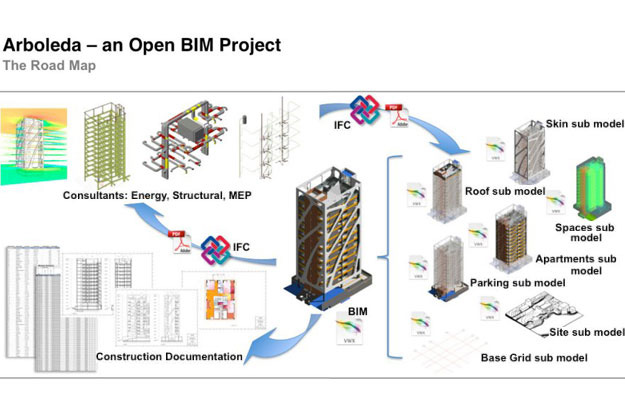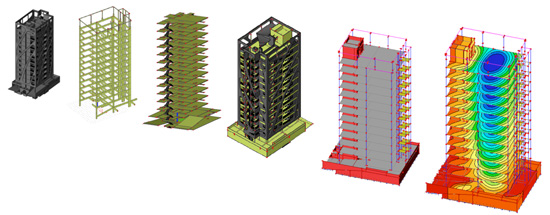Building Information Modeling as a Design Process
Developing the Design with Others
So far, the focus has been on an architect or firm using BIM in the design process. One of the truly transformative aspects of computerized BIM, however, is full collaboration with all stakeholders in the design and construction of a building project. This is possible even if different software is being used among the various parties due to the establishment of Open BIM standards that allows for a common software methodology to transfer data between programs. The key, however, is the establishment of one entity that owns and maintains the master building information model. In a return to the Master Builder role, that entity should be the architect who oversees and coordinates the work of all others. From the designated master model, information can be transferred to others for creation of sub-models for the structural systems, the site, the Mechanical, Electrical, and Plumbing (MEP) systems, and even a separate model for the architectural portion of the work. Each discipline starts with the modeling equivalent of “baseline drawings” in which to develop one's own detailed portion of the work. The result is returned to the master model for coordination and adjustment as may be necessary or deemed desirable. As the design progresses, the relevant information and documentation can be extracted from the model for design iteration improvements, final detailing, coordination, and data updates.


Images courtesy of Nemetschek Vectorworks, Inc.
Open BIM software standards allow a master model to be created while different members of a design team are able to use their own software to look at different aspects of structure, HVAC, heat loss, etc., which then relate back to the master model.
A fully integrated BIM process goes beyond the design team, however, and enables collaboration with the owner and construction professionals including contractors, construction managers, fabricators, sub-consultants, and suppliers. To the extent that all of these parties can be identified and brought to the table during design, then specific information related to particular products and materials can be directly inputted into the final model. The BIM process allows different manufactured items to be tested and assessed iteratively so that the best selection can be made as part of the final design. All of this means that the structure is literally being built on the computer, allowing actual product selections and ordering to take place in advance, thus saving time and overhead during the construction of the project. The specifications for these products and materials are embedded in the items used such that each component material, product, or system has corresponding information in the model related to features, attributes, size, quantity, and cost. This approach allows the computer to automatically generate schedules, materials lists, and pricing that can be seen and discussed by all to make fully informed, final decisions.









